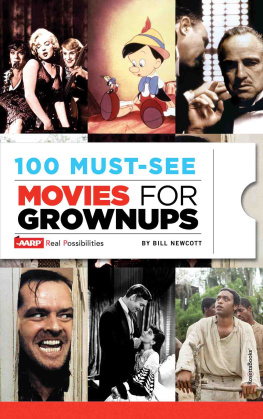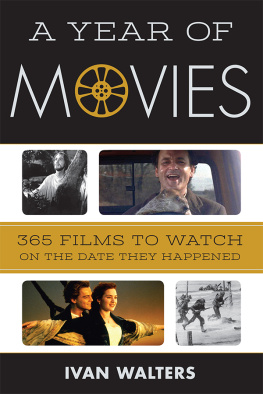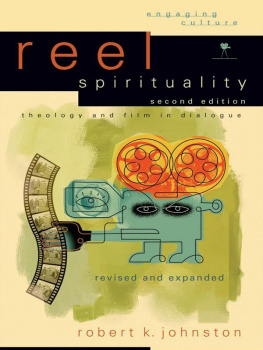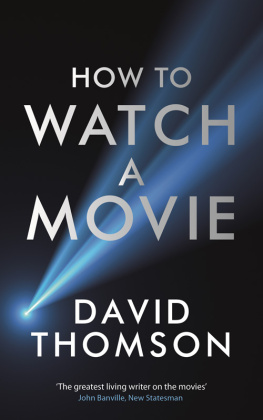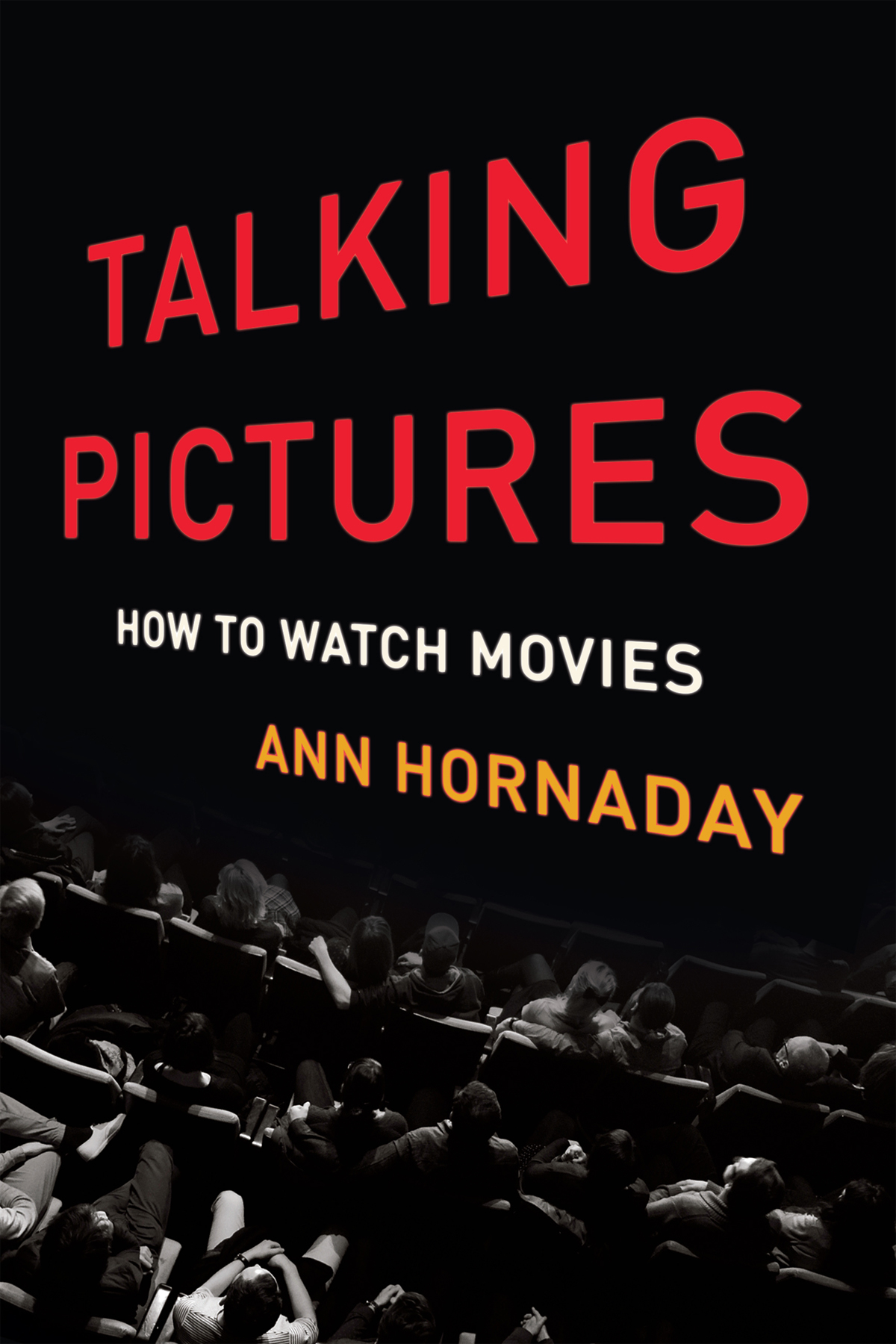Hachette Book Group supports the right to free expression and the value of copyright. The purpose of copyright is to encourage writers and artists to produce the creative works that enrich our culture.
The scanning, uploading, and distribution of this book without permission is a theft of the authors intellectual property. If you would like permission to use material from the book (other than for review purposes), please contact permissions@hbgusa.com. Thank you for your support of the authors rights.
a subsidiary of Hachette Book Group, Inc.
The publisher is not responsible for websites (or their content) that are not owned by the publisher.
Names: Hornaday, Ann author.
Title: Talking pictures : how to watch movies / Ann Hornaday.
Description: New York : Basic Books, 2017. | Includes bibliographical references and index.
Identifiers: LCCN 2017009751| ISBN 9780465094233 (hardcover) | ISBN 9780465094240 (ebook)
Subjects: LCSH: Motion pictures. | Motion picturesAnecdotes.
T HERE ARE A FEW INEVITABLE questions film critics face when we stagger our way into the sunlit world outside the darkened theaters in which we spend so much of our time. The first, almost always, is, Film critic, wow, how did you get that job? (Implied follow-up: How do I go about getting paid to sit around and watch movies all day, too?)
The answer, in my case, is: pure accident. I did not grow up a congenital movie geek. If anything, I was a bookworm, avoiding my familys usual weekend pastimes of board games, cards, and watching Iowa college football on TV to burrow into Harriet the Spy and, as a teenager, On the Road and Zen and the Art of Motorcycle Maintenance. I went to movies, sure: Fantasia, Mary Poppins, and Oliver! as a little kid; Young Frankenstein and Blazing Saddles as a fourteen-year-old (I can still remember the frisson of hearing Robert Redfords Oooooh shit when my friends and I saw Butch Cassidy and the Sundance Kid as easily scandalized youngsters). I credit one of my formative cinematic experiences to a favorite babysitter who took me to see the melodrama Dark Victory at the Varsity Theatre next door to Drake University, purely for the camp value of Bette Davis voraciously devouring the scenery as a rich party girl elegantly succumbing to a brain tumor. But I didnt eat, sleep, and breathe movies like so many contemporaries who would become my colleagues in the field.
Instead, I came to reviewing as a writer: after graduating from Smith College with a degree in government, I moved to New York to become a journalist. I worked at Ms. Magazine as a researcher and, for two wonderful years, as Gloria Steinems administrative assistant. It was Gloria who urged me to become a freelancer, because she had found the freedom and variety of freelancing to be both fulfilling and fruitful in discovering her own voice as a young writer. By the time I summoned the courage to take her advice, a handsome New Yorkbased movie magazine called Premiere had come into being. I began writing about filmmakers for their Cameo sectionedited with superb taste by the poet April Bernardwhere I wrote short profiles of the documentarian Albert Maysles, the costume designer Ellen Mirojnick, and the casting director Margery Simkin, among others.
Within a few years, I was writing film-related stories for The New York Times Arts & Leisure section, for which I interviewed the documentarians Joe Berlinger and Bruce Sinofsky, the experimental filmmaker Jem Cohen, emerging directors Noah Baumbach and Ang Lee, and a then little-known actor named Stanley Tucci.
This is all by way of explaining that, with the exception of a year spent studying filmmaking and cinema history at the University of Georgia under the auspices of a Pew National Arts Journalism Fellowship, Ive learned my craft on the job, as well as through frequent visits to my local video stores (remember those?). By the time I was invited to be the film critic at the Austin American-Statesman in 1995, I had watched enough moviesand had learned enough from their makersto feel confident that I could evaluate films knowledgeably and fairly. Whats more, my background as a non-expert allowed me to approach movies more like my readers, who even in our movie-mad culture only go out to see an average of .
Still, Ill never forget the paralyzing experience of sitting down to write my first official reviewof To Die For, Gus Van Sants based-on-a-true-story satire about murder, self-deception, and postmodern celebrity starring Nicole Kidman. I had adored the movie, of that I was certain. The question was: Why? As I stared at the cursor insistently blinking back at me in the Statesman newsroom, my mind was as blank as the computer screen. How on earth could I explain to thousands of readersof wildly divergent ages, backgrounds, tastes, and temperamentswhat made this movie so brilliant? How could I quantify the ways in which Kidman delivered such a shrewd, well-judged performance, or prove how Van Sant interpreted Buck Henrys stingingly funny screenplay so adroitly?
Luckily, I had received some advice just before moving to Austin that helped me forge ahead, counsel that has held me in good stead throughout the intervening twenty years. At one of several going-away get-togethers, my dear friend and fellow journalist David Friedman took me aside to share some wisdom he himself had received years before, when he became the television critic at the Philadelphia Daily News. Before you write any review, David told me, ask yourself three questions: What was the artist trying to achieve? Did they achieve it? And Was it worth doing?
I later learned that David was paraphrasing Goethe, who had similar advice for evaluating a piece of theater. No matter: those three questions have served as something of a north star throughout my career, as Ive tried to write reviews that go beyond mere subjective, thumbs-up-thumbs-down opinion and instead judge movies on their own merits, to help readers put them into context, and, if they should decide to see the film in question, to prepare them for the encounterwithout including pesky spoilers and time-wasting synopses.
After working in Austin for two delightful years of music, movies, and Tex-Mex (enriched by director Richard Linklaters Austin Film Society, whose screenings of vintage repertory and avant-garde contemporary cinema helped enormously in my continuing film education), I went to the Baltimore Sun, and from there to the Washington Post. In all three newsrooms, Ive sought continually to improve my understanding of filmmakers artistic aims and the challenges they face, as well as the assumptions and expectations of viewers with dauntingly diverse opinions as to what constitutes a good movie. An Iron Man and Dark Knight fanatic may have no intention of attending the latest Nicole Holofcener comedy of manners, but being a critic requires that I evaluate each of those movies in a way thats useful both to its natural constituency and to general audiences who simply want to keep abreast of whats happening in pop culture. And who knows? On the strength of one of my reviews, someone might decide to take a flier on a film they never would have considered before, and emerge a newly minted fan.


